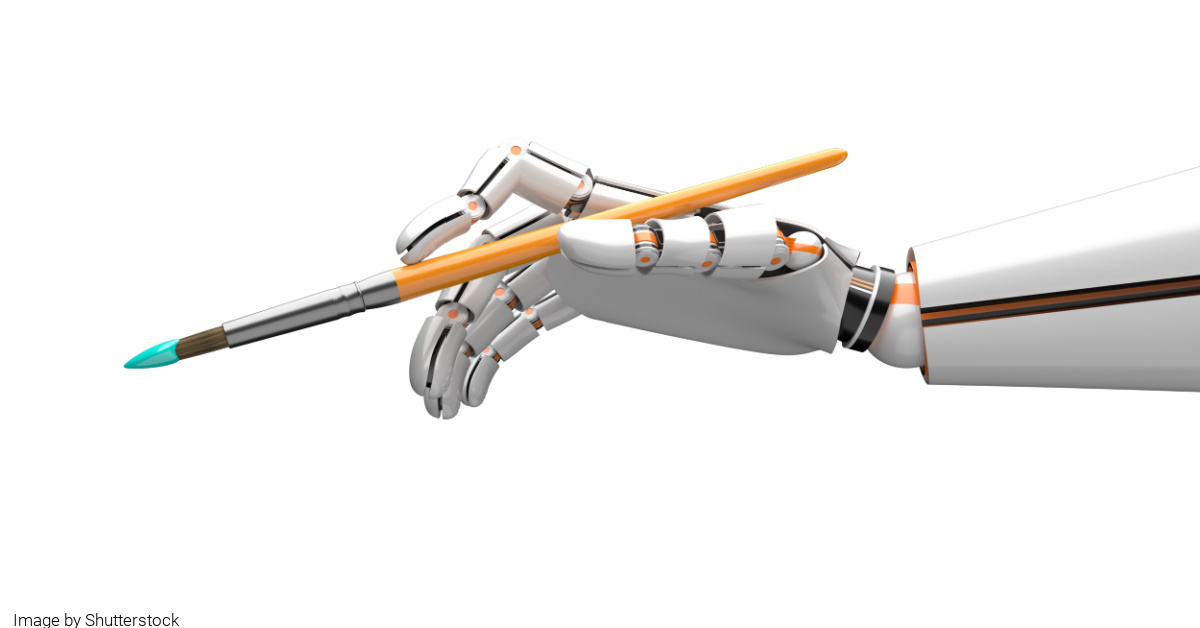The Rise of AI Generated Art
- September 19, 2023
- Posted by: Aanchal Iyer
- Category: Artificial Intelligence

The use of Artificial Intelligence (AI) in creating art is a relatively new concept, but it’s gaining quick popularity. In recent years, social media platforms have seen a huge rise in AI-generated avatars. These avatars are not ordinary pictures but algorithms using Machine Learning (ML) to create a tailored representation of a picture. AI art refers to any work of art that is developed with the help of an AI system. AI art is digital art created by algorithms or computers. The term “AI art” encompasses various subcategories – generative art, computational art, robotic art, evolutionary art, and cyborg art.
Impact of AI on Art Creation
The possibilities of the impact that AI will have on art creation are endless. With AI tools, artists can create compelling and exclusive pieces that may have been complex to create on their own earlier. AI art generators enable artists to specify prompts, such as images or text using which these generators develop a variety of models and styles. These generators can create free-flowing as well as stable patterns that allow artists to get creative with their work. This diffusion of AI art tools has led to an increased interest in art and possibly even a new generation of artists depending on these generators.
How AI Generates Art, including Neural Networks and Algorithms?
AI is used to create art in multiple ways. AI algorithms can create videos or photos based on a set of parameters or modify and combine existing images to design new ones. Neural networks help make films or pictures that are similar to a specific artist’s style or associate with a specific art form.
Generative Adversarial Networks (GANs) are the go-to technology for designing new artwork such as current artwork. The Neural Style Transfer (NST) process makes use of Deep Neural Networks to transfer the style of one art piece to another.
The main concept behind NST is that a feature space is created on top of the filter responses within each network layer. This feature space generates an illustration of the input picture style. It comprises the correlations between the various filter responses within the feature maps’ 3-D area. The artists then design a stable, multi-scale illustration of the input picture by adding the feature correlations of various layers. This captures the text but not the global layout. Organizations such as OpenAI with their Dall-E program (one of the most powerful platforms for making AI art) have helped enhance this technique further.
How does AI Art Compare to Traditional Art Forms?
AI art has the potential to be more realistic than traditional art forms. This is because AI can draw on a vast library of data and images to create its works of art. For example, an AI artist can create a painting based on millions of photographs of different landscapes. Thus, the final product is more realistic and detailed than a traditional painting which depends on a single photo or memory. However, traditional art forms have the advantage of human artists who infuse their own experiences and emotions into their work. This results in more relatable and personal artwork.
Ethical Concerns with Using AI in the Art World
AI art bears the criticism of automatic plagiarism as it relies on millions of art pieces. It also adds to deeper fears: of ruining people’s creative work and blurring reality boundaries.
The main concern with AI art is that it takes away the creative expression from the artist. In traditional art forms, the artist completely controls their work. However, with AI art, much of the creative decision-making is lost from the artist’s hands. The artist depends on an algorithm to create their art pieces. Another concern is that AI art can lead to plagiarism. Algorithms learn from existing data; thus, there is a risk that they may just copy prevailing works of art.
We should be aware of such concerns and take steps to prevent them. For example, we can develop algorithms that need a specific amount of input from the artist before creating the final product. However, we still have to answer some questions, such as “Who owns the copyright to I art?” “How do we value AI art?”. These are questions that need answers as AI art becomes more prevalent.
Future of AI-Human Collaboration
One can use AI art as inspiration and also create their own AI art and use it to inspire new work. David O’Reilly is an excellent example. He has created an animated children’s cartoon – “Bartak” using AI tools only. Similarly, independent developer “Nao_u” has developed a 2D shooting game “Shoon” using AI tools. This is an example of emerging advancements in 3D model AI generation expanding the potential for game development. In this sense, AI cannot replace human artists but instead, help them focus more on other creative processes.
Wrapping Up
AI has become much better at creating art, from writing movies to creating hyper-realistic pictures. People use generative models for such tasks, which, when offered enough training data, can create new data. The precise trajectory of AI art remains unclear, and present AI technology can create pictures, movies, and texts that can trick humans. Thus, the possibilities of AI art are both scary and exciting at the same time. For now, we can be confident that AI artwork will not replace humans. It is instead an exciting new frontier for artists to explore.
